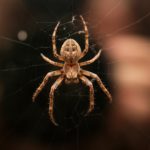
The Homeowner’s Guide to Dangerous Utah Spiders
Utah’s desert mountain climate is beautiful and unique, and it makes Utah a truly remarkable place to live. Many people love Utah for its friendly, family-focused culture. Others love the rapidly growing business grid. Still others love the phenomenal skiing, mountain biking, hiking, and water sports. Utah is an incredible place, but there are two little problems.
Their names? The black widow spider and the brown recluse spider.
These two poisonous spiders can make living in Utah a bit dangerous unless you know what they look like, what they can do, and how to get rid of them. And because these spiders are so often found in homes across Utah, you as a homeowner should know how to protect yourself and your family. Learn more about these spiders below-and if you spot one, call your local pest control company immediately.
Black Widow Spiders
In this section, we’ll discuss the black widow spider so you can better recognize this pest.
What Are the Dangers of Black Widow Spiders?
Black widow spiders look shiny black in color, with a bright red, hourglass-shaped pattern on their bellies. They’re quite small-usually not larger than 10 millimeters in size. Black widows are desert spiders and quite at home in the relatively dry climate of Utah’s valleys.
Black widow spiders are the most venomous spiders in the US and Canada, with a venom that National Geographic reports to be 15 times stronger than that of a rattlesnake. They don’t usually attack aggressively. They’re more likely to bite if they’re startled and feel threatened, like if someone sits on them or sticks their hand unknowingly into the spider’s web.
Most black widow bites are not dangerous-in fact, many people aren’t even aware that they’ve been bitten because so little venom enters their system. But for small children and those with weakened immune systems, the black widow’s bite can be deadly.
If you or someone you love is bitten by a black widow spider, you should seek immediate medical attention. You’ll likely feel muscle aches and nausea, but don’t panic. An emergency room doctor can help ensure that the black widow’s venom doesn’t cause serious damage.
What Are Black Widow Spiders’ Habits?
Like most spiders, black widows prefer the dark. They create irregularly shaped, messy webs in quiet corners, so you’ll likely spot a black widow in a dark corner of your garden shed or dry area of your kitchen. Black widows are solitary, and they’ll avoid noise and light whenever they can.
When reaching into dark places that you can’t see well, such as when you garden or clean, be sure to wear protective gloves. These spiders like to build their large webs near the ground and beneath protected ledges-just the sort of place you’d stick your hand into without thinking much.
What Should I Do About Black Widows?
If you spot a black widow in your home, your pest control company should be the first to know. Although black widow spiders are not aggressive, their bite can injure and even kill, so you need to live in a completely black-widow-free zone.
Brown Recluse Spiders
Below, we’ll talk about the brown recluse spider, its habits, and what you should do if you encounter one.
What Are the Dangers of Brown Recluse Spiders?
Brown recluse spiders are a light brown color with a dark mark on their backs. Because the shape looks a bit like a violin, these spiders are also called fiddle-back spiders. The average brown recluse spider is about the size of a US quarter (including its legs). However, in Utah, they’re known to be quite a bit larger-some adult spiders can even be nearly as large as the palm of your hand.
Brown recluse spiders are venomous. And although a study at UC Berkeley revealed that 90% of brown recluse spider bites heal without medical assistance, the venom can be dangerous and even deadly. Like black widow spiders, brown recluse spiders usually only bite when provoked or surprised.
If you are bitten, a small white blister may develop. This blister can eventually develop into a gangrenous, open, painful wound. You may also experience chills, nausea, and a fever. If you’ve been bitten by a brown recluse, go to the emergency room right away.
What Are Brown Recluse Spiders’ Habits?
Brown recluse spiders like closed, dark, dry places, so they’re so often spotted in piles of clothes, in bedding, or inside closets. In fact, most bites occur because someone puts on an old sweater or climbs into a bed that a brown recluse has made its home in these areas.
The best way to protect yourself and family members from brown recluse spiders is to keep tidy. Don’t allow piles of clothing or garbage to frow, and wash your bedding frequently.
What Should I Do About Brown Recluse Spiders?
Brown recluse spiders can threaten the health of you and your family members, so if you see one in your home, contact your pest control company immediately.
In fact, we recommend that you have your home sprayed for spiders at least once each year anyway. If you haven’t already had your home sprayed against spiders, insects, and other pests, do so now, before black widows or brown recluses have a chance to move in and get comfortable.
Talk to your pest control specialist if you have more questions about Utah’s dangerous native spiders.
